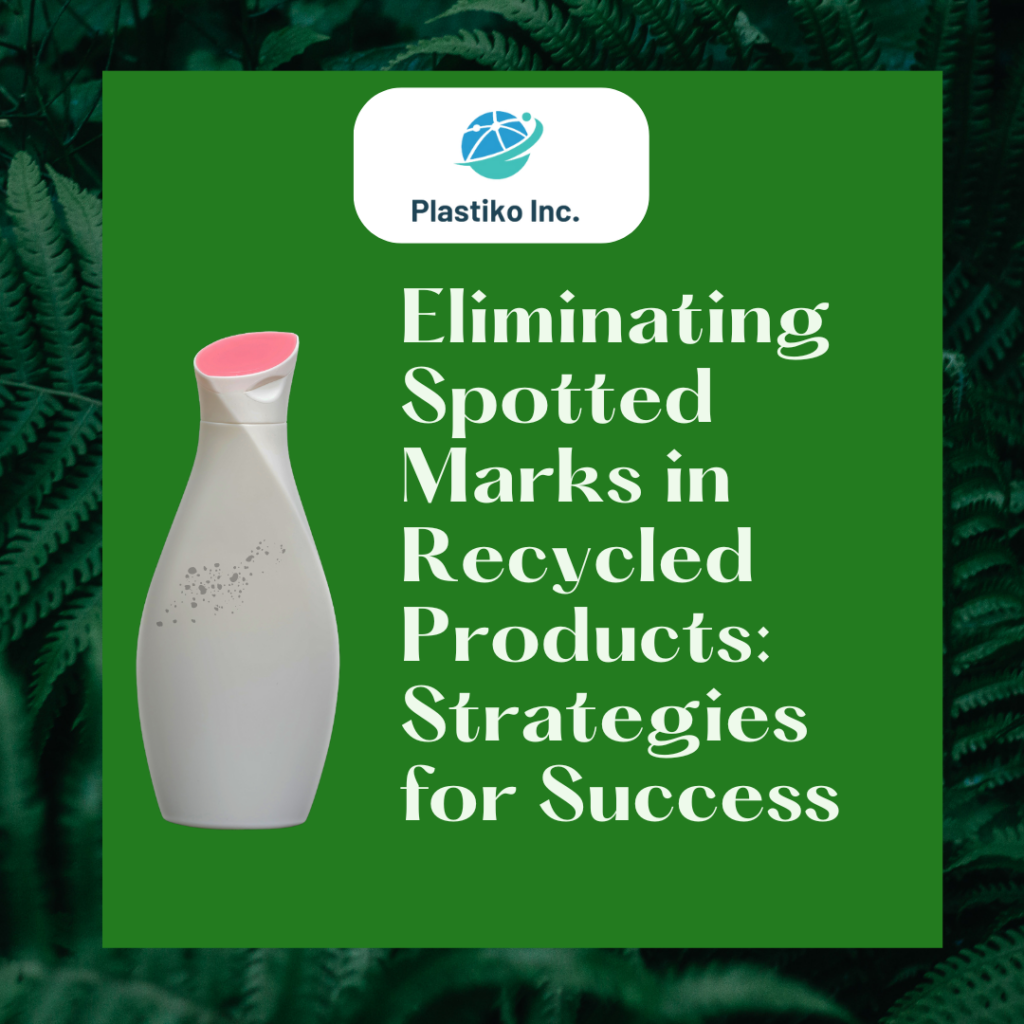Eliminating Spotted Marks in Recycled Products: Strategies for Success
Recycling plastics is a critical part of sustainability efforts, but the process can introduce challenges such as spotted marks in recycled products. These imperfections can affect the aesthetic quality and perceived value of the final products. However, there are effective strategies to eliminate or overcome these challenges:

1. Improved Sorting and Cleaning
One of the primary reasons for spotted marks is contamination. Implementing advanced sorting technologies, such as near-infrared (NIR) spectroscopy, can enhance the purity of recycled materials by accurately identifying and separating different types of plastics. Additionally, thorough cleaning processes are essential to remove contaminants like dirt, labels, and adhesives that can cause spots.
2. Optimized Compounding Processes
During the recycling process, blending different batches of plastic can result in inconsistent material properties. By optimizing the compounding process and ensuring consistent mixing, it is possible to achieve a more uniform appearance. Utilizing high-quality additives and stabilizers can further enhance the homogeneity of the recycled material.
3. Melt Filtration Systems
Melt filtration is a crucial step in eliminating impurities that cause spotted marks. Advanced filtration systems can remove fine particles and contaminants from the molten plastic, resulting in a cleaner end-product. Regular maintenance and replacement of filters are necessary to maintain the effectiveness of this process.
4. Color Matching and Masterbatch Solutions
Variations in color can highlight imperfections in recycled products. Implementing precise color matching techniques and using high-quality masterbatches can help achieve a consistent color throughout the material. This reduces the visibility of any residual spots and improves the overall appearance.
5. Innovative Recycling Technologies
Emerging technologies, such as chemical recycling, offer new possibilities for creating high-quality recycled plastics. Chemical recycling breaks down plastics into their original monomers, allowing for the production of virgin-quality polymers. This process can significantly reduce the occurrence of spotted marks and enhance the overall quality of recycled products.
6. Quality Control and Testing
Implementing rigorous quality control measures throughout the recycling process is essential to identify and address any issues early on. Regular testing for contaminants, color consistency, and material properties can help ensure that the final products meet the desired standards.
By adopting these strategies, manufacturers can effectively overcome the challenges associated with spotted marks in recycled products. As the industry continues to innovate and improve recycling processes, the quality and appearance of recycled plastics will undoubtedly reach new heights, contributing to a more sustainable and aesthetically pleasing future.
These approaches not only improve the visual quality of recycled products but also enhance consumer trust and acceptance of recycled materials, paving the way for a more sustainable plastics industry. For more help in obtaining quality recycled resins or assistance in overcoming the challenge of spotted marks contact Plastiko, Inc. today at https://plastikoinc.com/contact/
